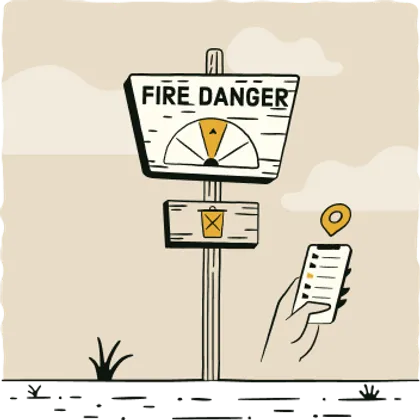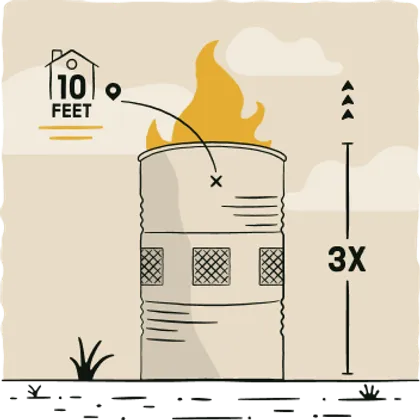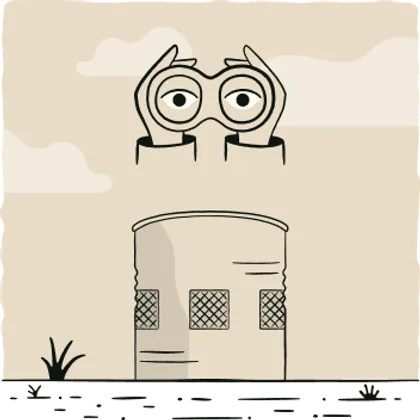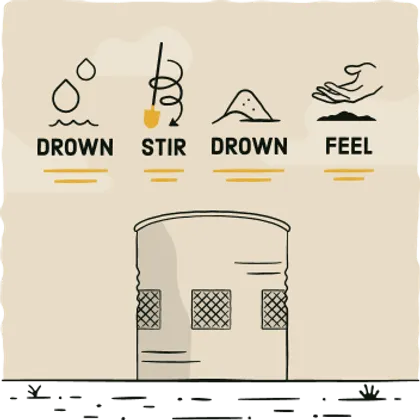Debris Burning Safety Guide
Plan Ahead
Step 01 What You’ll Need
-
Make sure to have the right items on hand
- Tools: Water, bucket or large container, shovel, burn barrel (if available)
- Cellphone: Call 911 immediately in case of emergency — if your fire jumps from the pit to surrounding vegetation or if embers fly outside of the fire.

Step 02 Know Before You Burn
-
Check local regulations and ordinances
Search for ‘fire restrictions’ followed by your location or local public lands agency. Always check to see if a permit is required and if burning is safe in your area.
-
Check the conditions
Don’t burn in windy conditions or when vegetation is very dry.
-
Burn this, not that
Burn dry, natural vegetation grown on the property but never trash, plastic, or tires.

Stay Safe
Step 03 Pick Your Best Spot
-
Look up
You need an overhead clearance of at least 3x the height of the pile, so stay away from power lines, overhanging limbs, buildings, vehicles, and equipment.
-
Look around
You need a clearance of at least 10 feet of gravel or dirt around the area. You will water this and the surrounding area when extinguishing the fire.

Step 04 Prepare Your Burn Pile
-
Use a metal burn barrel
Make sure it’s in good condition and has at least three evenly-spaced, 3-inch, screened vents and metal top screen.
-
Keep your pile small and manageable
Keep your burn pile to a maximum of 4 feet by 4 feet, and add additional debris only after the fire has died down.

Step 05 Keep an Eye on Your Fire
-
Keep your wit around your burn pit
Always be vigilant around your fire — don’t play around and keep an eye on children and pets.

Extinguish Your Fire
Step 06 Don’t Keep It Lit, Extinguish It
-
Drown
Pour lots of water on the fire until the hissing sound stops, drowning all the embers — don’t extinguish a fire with just dirt or sand.
-
Stir
Use your shovel to stir the water into the embers, dirt, and sand, and mix well. Scrape any sticks and logs until no embers are exposed or smoldering, not just the red ones.
-
Drown
Continue adding water, dirt, and sand until all material is cool.
-
Feel
Hover the back of your hand over the ashes to feel that the embers are cool — don’t leave without making sure your fire is entirely out.

Step 07 Stay Diligent
-
Check the area regularly
Check the area up to several weeks after the burn for any signs of smoldering or burning, especially if the weather is warm, dry, and windy.
